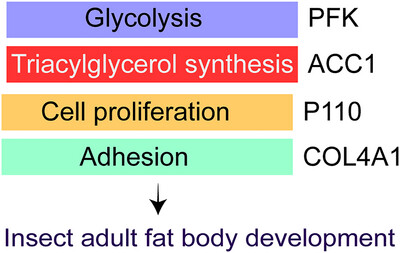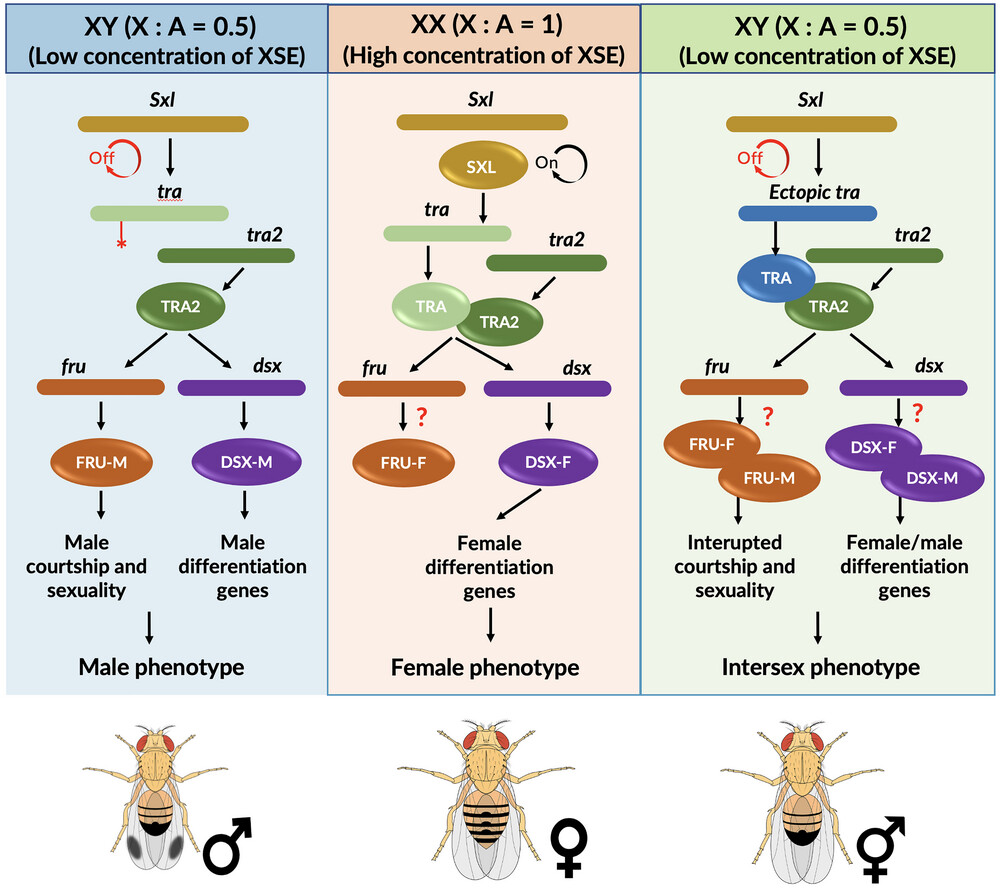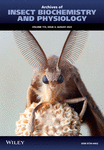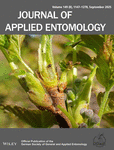Journal list menu
Export Citations
Download PDFs
Articles
Role of CYP311A1 in wing development of Drosophila melanogaster
- First Published: 06 March 2024
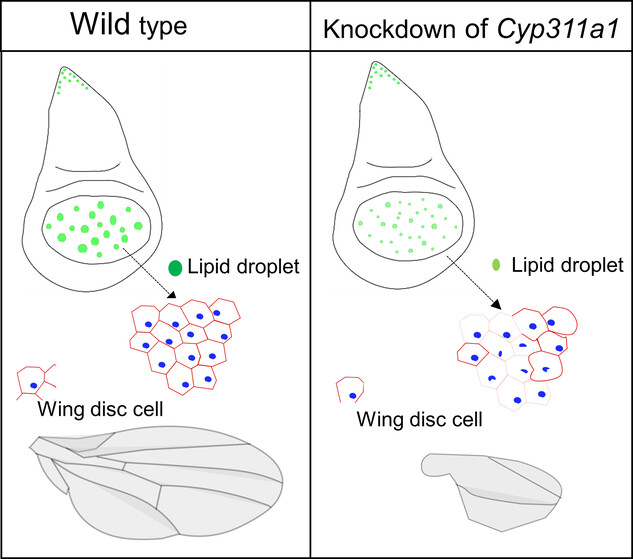
The cytochrome P450 monooxygenase Cyp311a1 is required to ensure lipid homeostasis in developing wings of Drosophila melanogaster; loss of function of Cyp311a1 affects lipid amount and disrupts cell homeostasis in imaginal wing discs. Probably as a consequence, the wing shape of adult flies with reduced Cyp311a1 expression are deformed.
Characterization of two Bursicon genes and their association with wing development in the brown citrus aphid, Aphis citricidus
- First Published: 09 February 2024
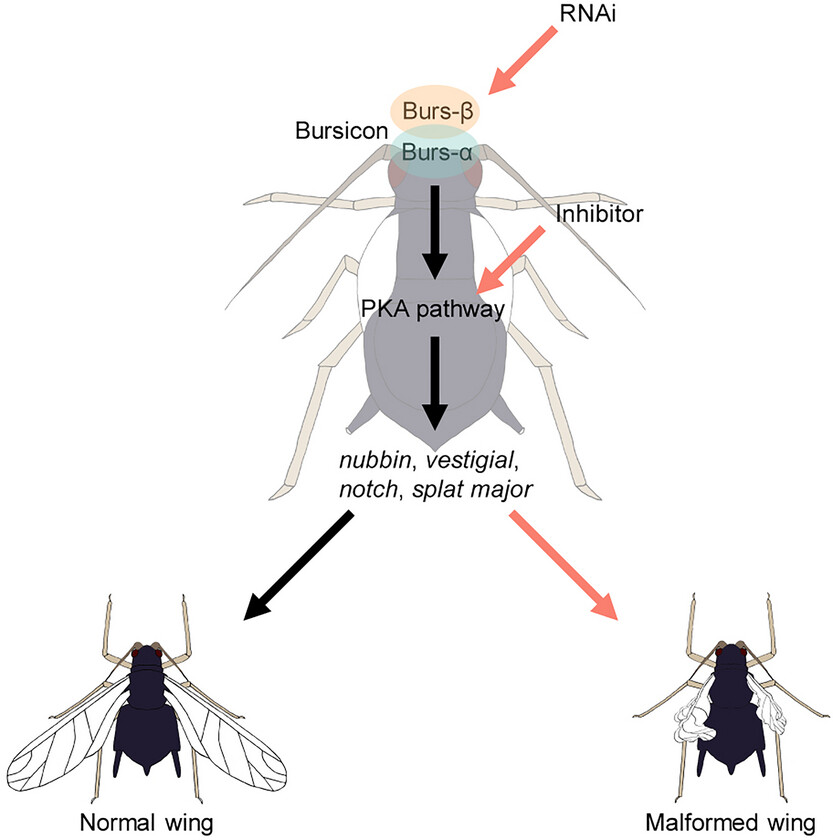
AcBurs-α and AcBurs-β were first identified and characterized in Aphis citricidus. Feeding both double-stranded RNA (dsRNA), regardless of whether dsAcBurs-α/dsAcBurs-β alone or in combination with dsAcBurs-α+dsAcBurs-β, and inhibitor, significantly downregulated the wing development-related genes nubbin, vestigial, notch, and spalt major, and resulted in curled and malformed wings in A. citricidus.
BmSLC7A5 is essential for silk protein synthesis and larval development in Bombyx mori
- First Published: 29 January 2024
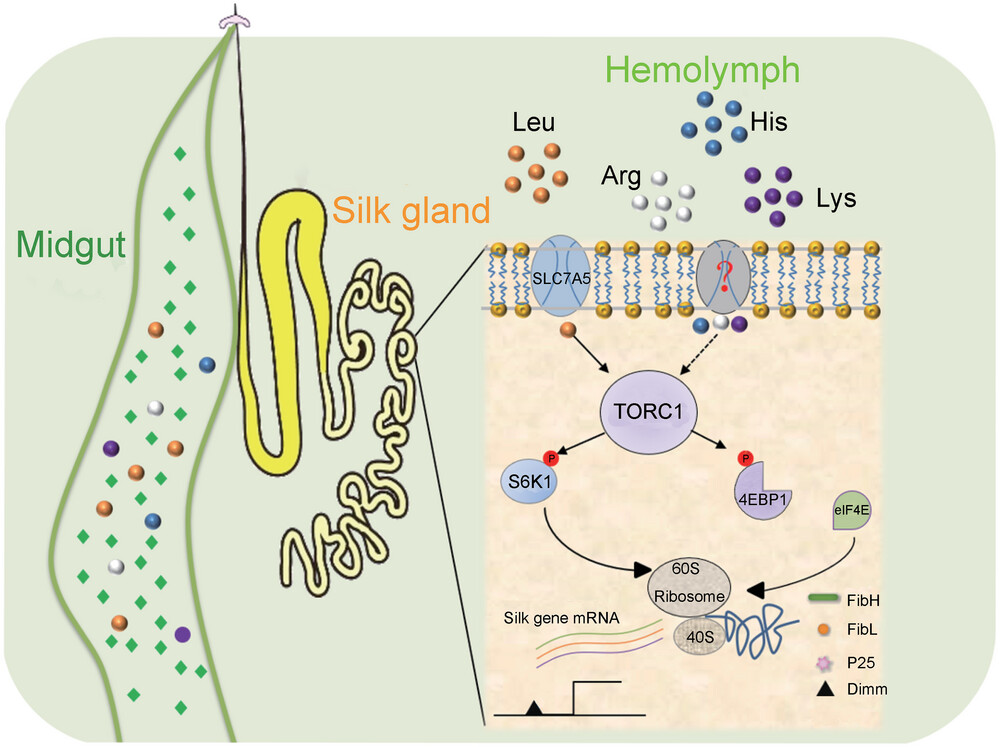
We demonstrate that amino acid signaling regulates silk protein synthesis and larval development by L-type amino acid transporter 1 in Bombyx mori. Feed intake is increased in the early 5th instar, which accelerates nutrient absorption in the midgut and accumulation of amino acids in the hemolymph. Meanwhile, the expression of BmSLC7A5 shows an enhancement, which is positively correlated with leucine content in the silk gland. Leucine increases the activity of TORC1 signaling, and 4EBP1 and S6K1 are phosphorylated by TORC1, which activate eukaryotic translation initiation factors and ribosomal protein S6 to improve protein translation. Finally, silk proteins (FibH, FibL, and P25) and transcriptional activators (Dimm) display an obvious increase. Our results improve the understanding of the molecular mechanisms of silk protein synthesis at the translation level.
METTL3/METTL14-mediated RNA m6A modification is involved in male reproductive development in Bactrocera dorsalis
- First Published: 19 February 2025
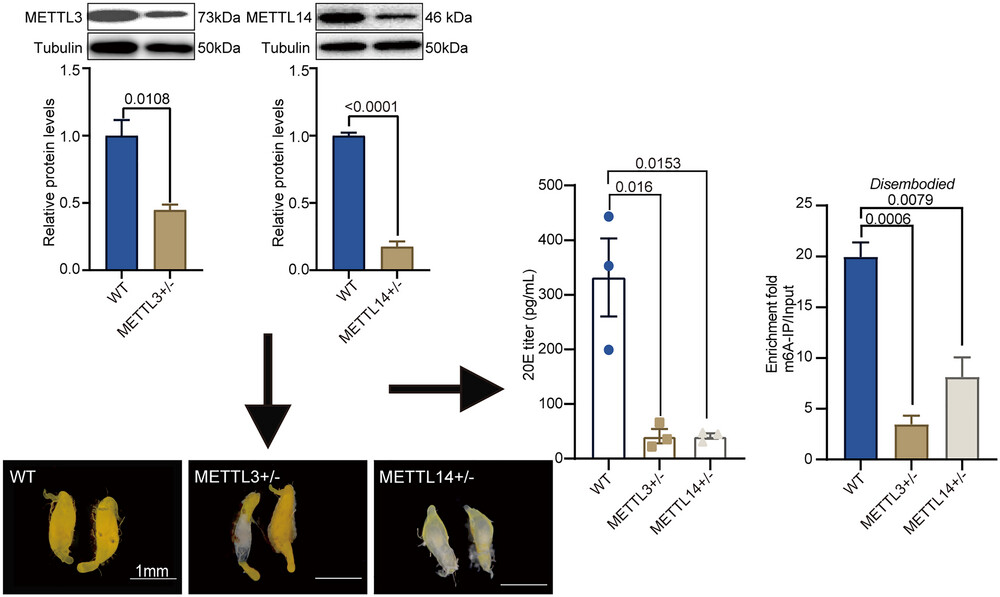
The roles of RNA m6A mediated by METTL3 and METTL14 in Bactrocera dorsalis were explored through introducing mutations into METTL3 and METTL14 by CRISPR/Cas9-mediated gene knockout. The testes of the METTL3+/- and METTL14+/- insects were deformed. The RNA m6A modification mediated by METTL3/METTL14 affects the titer of 20-hydroxyecdysone (20E), and the target gene of RNA m6A modification, Disembodied, was identified.
Development of the insect adult fat body relies on glycolysis, lipid synthesis, cell proliferation, and cell adhesion
- First Published: 26 August 2024
Dual-role regulator of a novel miR-3040 in photoperiod-mediated wing dimorphism and wing development in green peach aphid
- First Published: 10 May 2024

Long photoperiod resulted in the formation of wingless offspring via inhibiting miR-3040 expression. Conversely, short photoperiod led to the formation of winged aphids via activating miR-3040 expression. Under the short photoperiod, the dynamic balance of miR-3040 expression was essential to maintain normal wing development.
The transformer gene controls sexual development in Drosophila suzukii
- First Published: 30 March 2025
Doublesex regulates male sexual development in the cricket Gryllus bimaculatus
- First Published: 11 March 2025
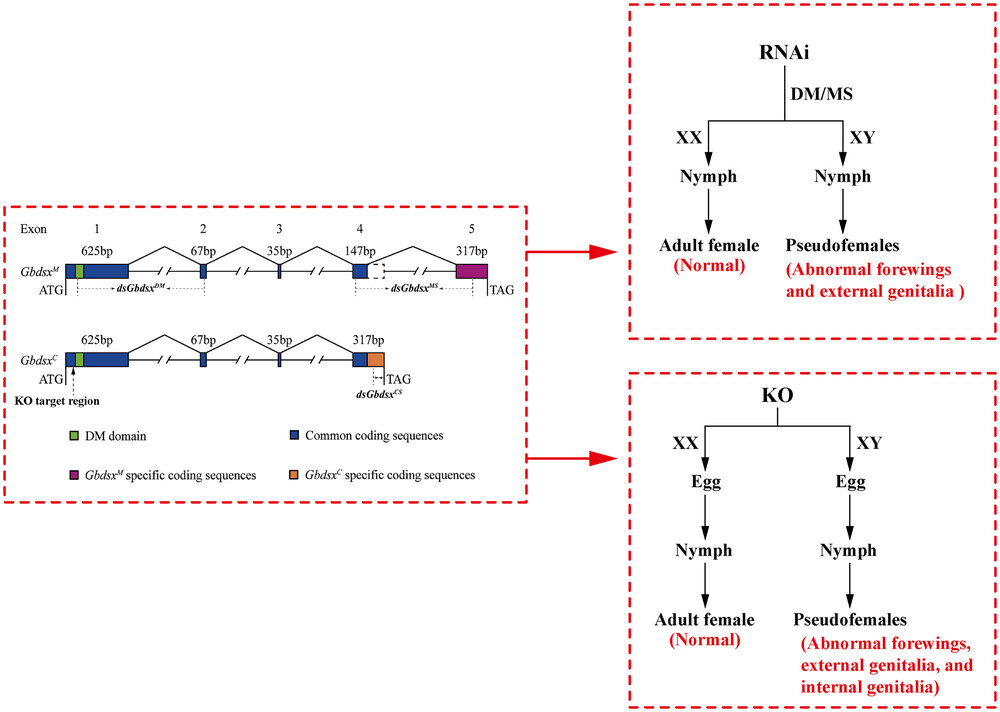
We first identified the doublesex (dsx) homolog in Gryllus bimaculatus. Our findings indicate that GbdsxM is essential for the development of male cricket sexual traits, courtship and mating behavior. The RNAi-mediated knock-down of GbdsxM in 6th-instar nymphs led to feminized forewing veins and abnormal tissue swelling of external genitalia in all male adults. CRISPR/Cas9-mediated knockout (KO) of Gbdsx in the early embryonic stage resulted in adult males becoming pseudofemales, with feminized forewings and abnormal external and internal genitalia, with strong or moderate phenotypes. Additionally, the pseudofemales created by Gbdsx knockout demonstrated normal courtship trends and aggressive behavior but no actual mating behavior.
miR-927 regulates insect wing development by targeting the Hippo pathway
- First Published: 09 September 2024
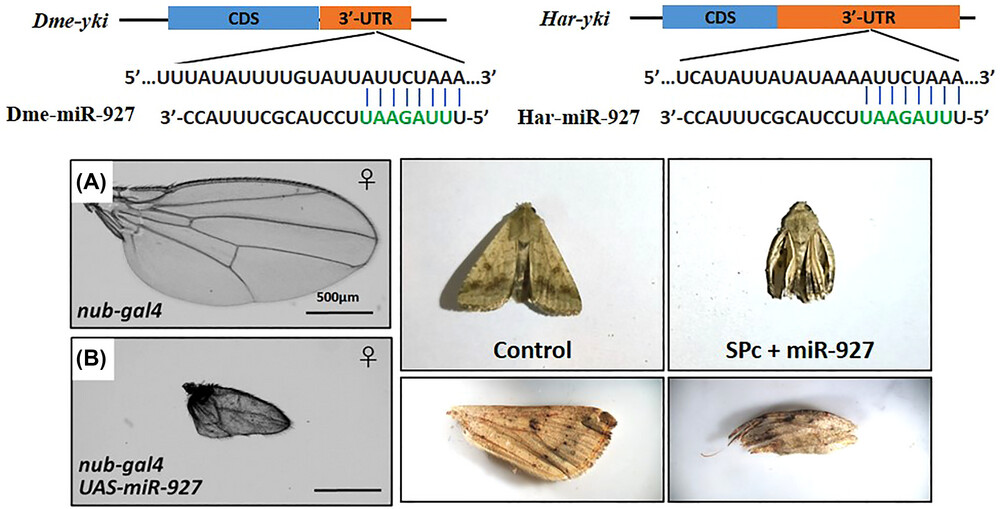
Wings are vital organs for insects, which participate in multiple processes, such as foraging and mating. Insect wing development is a fascinating and intricate process that involves the regulation of wing size through cell proliferation and apoptosis, which are controlled by the Hippo pathway. Here, we discover that miR-927 is a novel regulator of wing size via the Hippo pathway on a post-transcriptional level. Next, we demonstrate that yki 3’ untranslated region is the direct target of miR-927. Ultimately, our study reveals that the targeting of yki by miR-927 to regulate the Hippo pathway is conserved in Helicoverpa armigera. Administration of miR-927 via star polycation nanocarrier effectively inhibits wing development in H. armigera.
Targeting Syntaxin 1A via RNA interference inhibits feeding and midgut development in Locusta migratoria
- First Published: 29 July 2024

(1) Injection of dsLmSyx1A into 5th-instar nymphs resulted in the cessation of feeding. (2) Silencing dsLmSyx1A led to atrophy of the midgut and gastric cecum in locusts. (3) A severely damaged brush border was observed in dsLmSyx1A-injected nymphs. (4) Silencing LmSyx1A repressed the expression of genes involved in the insulin/mTOR-associated nutritional pathway.
Regulatory mechanisms of nitrogen homeostasis in insect growth and development
- First Published: 27 April 2025
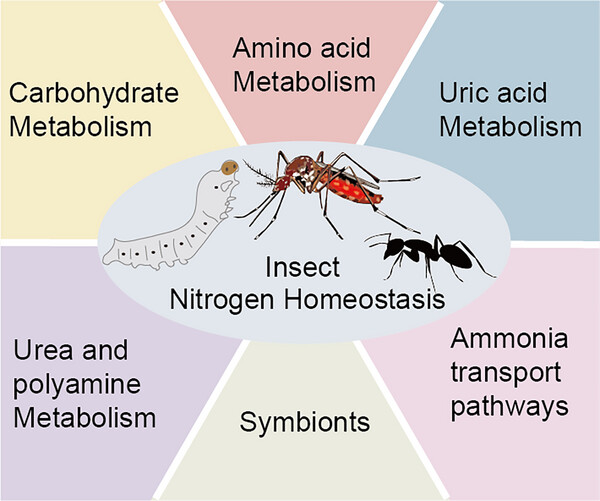
This study investigates the regulatory mechanisms of nitrogen homeostasis in insects, with a particular emphasis on the interplay between carbohydrate metabolism, amino acid metabolism, purine catabolism (uric acid and urea), polyamine biosynthesis, ammonia transport systems, and symbiotic microbiota. The research provides novel perspectives on insect nutritional physiology and contributes to the advancement of innovative strategies for pest management.




